Differentiation can feel like the ultimate education buzz word. We all say it all the time, but are you effectively differentiating for the special education student in your classroom? Let’s break down HOW to differentiate activities for special ed.

It is actually really simple… just like building a remote-control spaceship to the moon out of macaroni.
No problem.
You need to know three things before you can effectively differentiate.
- What are a student’s deficits.
- What are a student’s strengths.
- What is the point of the lesson.
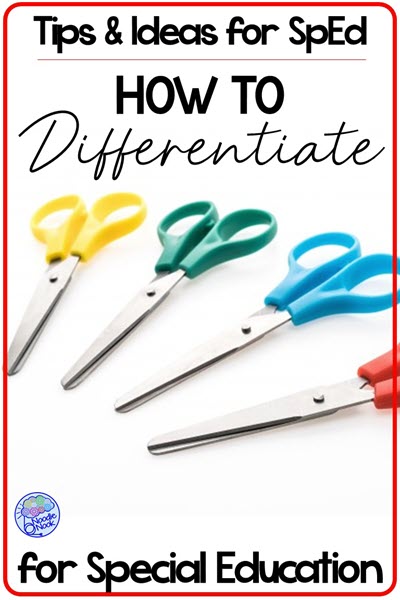
How to Differentiate Activities for Special Ed
It can start to feel like a lengthy laundry list when considering how to differentiate. So stop. What we need to know is simple. Given an assignment, what part is going to be the most challenging for a student? What can a student do well? And what the point of the activity is in the first place.
Here’s an example: The lesson is on simplifying algebraic equations.
The goal is for students to group like terms. There are a couple of students who cannot add or subtract numbers over ten. They are, however, very good at sorting. In this case, you would differentiate by having some students sort like terms. Then I would demonstrate how to use a calculator to add the numbers together. Then the students would write the simplified terms on their worksheet.
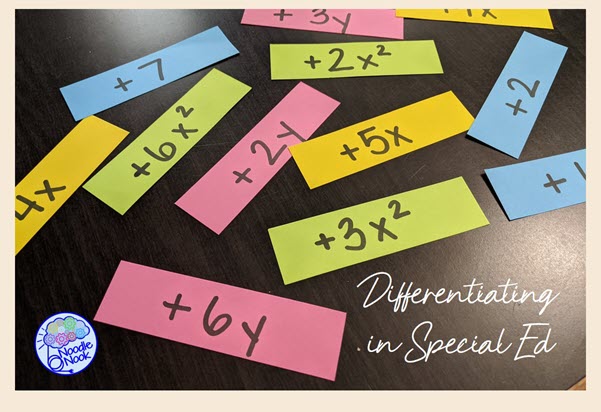
The goal was to group like terms. They have done that.
And I didn’t exclude them from the lesson.
Once you really embrace the three things you need to know, then start to consider what you can adjust. Look over this graphic:
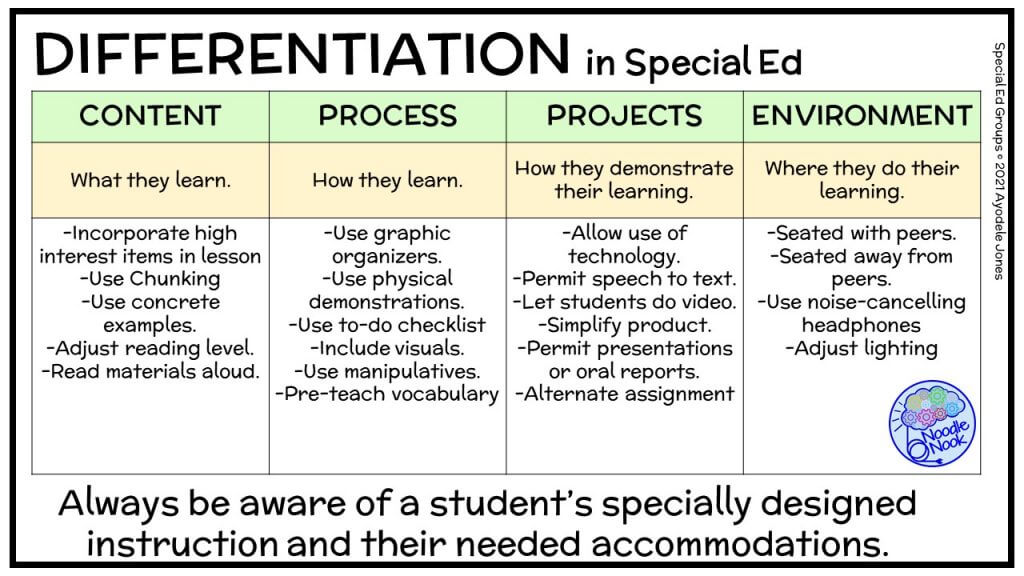
Differentiating the Content
Differentiating content for special needs students involves modifying the material to meet the individual needs of the student. This is to ensure they are able to learn and understand the same core concepts as their peers.
But how do you do this? Start by using a variety of strategies such as providing visual aids, using hands-on activities, breaking down complex concepts into smaller, more manageable chunks, and providing extra support and scaffolding. It may also help to provide multiple representations of information. As an example, providing written instructions as well as verbal explanations or using technology to present information in a different format. Since every student is unique and has different needs, try different strategies to find what works best for each individual student.
Ideas for Differentiating the Content
For students with significant disabilities, differentiating content may involve using more specialized strategies and accommodations. Here are a few examples:
- Using alternative forms of communication: For students who are non-verbal or have difficulty speaking, providing alternative forms of communication such as sign language, picture communication systems, or assistive technology can help them express themselves and participate in class.
- Adapting materials: For students who have difficulty reading or writing, providing materials in audio format, large print, or Braille can help them access the content.
- Providing hands-on activities: For students who have difficulty understanding abstract concepts, hands-on activities or real-life examples can help make the material more concrete and easier to understand.
- Incorporating high-interest items: Incorporating high-interest items such as current events, real-life examples or relatable scenarios can make the material more engaging and relevant for students.
- Reading materials aloud: Reading materials aloud can help students with special needs to better understand the material by providing a verbal explanation in addition to written instructions.
- Using concrete examples: Using concrete examples can help students with special needs to better understand abstract concepts by making them more concrete and tangible.
- Chunking: Breaking down complex concepts into smaller, more manageable chunks can help students with special needs to better understand the material by providing a step-by-step approach.
- Adjusting the reading level: Adjusting the reading level of the material can help students with special needs to better understand the material by providing a text that is more appropriate for their reading level.
It’s important to remember that the key to effective differentiation for students with significant disabilities is to work closely with the student, the family, and other professionals such as the Special Education teacher and Speech Pathologist to understand the student’s individual needs and design instruction accordingly.
Differentiate the Process
Differentiating the process for special needs students is a great way to make sure everyone is able to fully participate and engage in the learning experience! When we differentiate the process, we’re giving students the chance to learn in a way that works best for them, and that can make all the difference in their understanding and engagement.
For students with special needs, differentiating the process can help them feel more comfortable and focused in class. Some students may work better with visual prompts while others may prefer verbal instructions. Providing different options allows everyone to work in a way that suits them best. Plus, by incorporating different learning styles, such as hands-on activities or technology, we can make learning fun and interactive for everyone.
How to Differentiate the Process
There are so many fun and creative ways for how to differentiate activities for special ed through the process, such as:
- Incorporating different learning styles: Some students may be kinesthetic learners and benefit from hands-on activities, while others may be auditory learners and prefer listening to recordings. Mixing up the teaching methods can make learning fun and interactive for everyone.
- Using graphic organizers: Graphic organizers can help students with special needs to organize their thoughts and better understand the material by visually representing information in a way that is easy to understand.
- Physical demonstrations: Physical demonstrations can help students with special needs to better understand concepts by providing a hands-on experience.
- Providing a to-do checklist: A to-do checklist can help students with special needs to stay on task and manage their time more effectively by breaking down assignments into smaller, more manageable steps.
- Using manipulatives: Manipulatives can help students with special needs to better understand concepts by providing a concrete, hands-on experience.
- Pre-teaching vocabulary: Pre-teaching vocabulary can help students with special needs to better understand the material by providing them with the necessary background knowledge before they begin the assignment.
Remember, the key is to provide opportunities for students to learn in a way that works best for them. By differentiating the process, you’re creating an inclusive and supportive classroom where every student can succeed.
Differentiate the Project
When we differentiate the project for students, it’s about meeting their needs. By tailoring the project to their individual needs, we can make sure that everyone has the opportunity to shine and demonstrate their understanding of the material.
One way to differentiate projects is to offer multiple options for completion. For example, some students may prefer to create a visual presentation while others may prefer to write a report. Allowing for different options ensures that each student can showcase their understanding in a way that works best for them.
How to Differentiate the Project
Differentiating projects for special needs students is a way to make showing what a student knows fit with their strengths and abilities. And not penalizing a student because they aren’t neurotypical in their learning. Keep these options in mind:
- Offering multiple options for completing projects: Some students may work better with visual prompts while others may prefer verbal instructions, so offering different options allows everyone to work in a way that suits them best.
- Providing choice in projects: Giving students a choice in what they want to learn about or how they want to present their work can give them a sense of ownership and make learning more engaging.
- Adapting the complexity level: For students who need extra help, breaking down the project into smaller, more manageable chunks and providing extra support can be beneficial. For students who need more of a challenge, increasing the complexity level of the project can help them to stretch their abilities.
- Letting students do a video: Allowing students to create a video as an alternative to a written report or presentation can be a great way to differentiate projects. Video projects allow students to express themselves in a creative and engaging way.
- Permitting presentations or oral reports: Some students may prefer to present their work in a more verbal format. Allowing students to give presentations or oral reports can be a great way to differentiate projects.
- Allowing alternative assignments: Different students have different strengths and preferences, allowing alternative assignments gives students the chance to showcase their knowledge and skills in a way that works best for them.
Now that we’ve covered the key areas of differentiating content, process and product, are you ready to take your skills to the next level? I’ve developed an in-depth, hands-on course called “Lesson Plans that Work: Differentiation for Students with Complex Access Needs” where you’ll get step-by-step guidance, frameworks and tools for planning truly individualized instruction. Click here to learn more and register today!
Differentiate the Environment
The setting where we learn can directly impact our ability to acquire and retain ideas and skills. That’s why differentiating the environment can be such a powerful approach. It appeals to a student’s preferred learning modalities and takes into account their needs. It also helps to create an inclusive and supportive classroom where every student can succeed.
For students with disabilities, a differentiated environment can help to reduce barriers to learning by making the classroom more accessible physically and mentally. For example, creating a sensory-friendly environment can help students with sensory processing disorders feel more comfortable and focused, allowing them to better engage in the learning process. Anchor charts on the wall can support students to process information, and visual cues can support learning. The environment matters.
How to Differentiate the Environment
Here are some ideas on how to differentiate activities for special ed by altering the environment:
- Creating a sensory-friendly environment: For students with sensory processing disorders, creating a sensory-friendly environment can help them feel more comfortable and focused. This can include using soft lighting, reducing noise levels, and providing sensory breaks.
- Providing noise-canceling headphones: These headphones can help to reduce distractions and create a more focused learning environment for students who are sensitive to noise.
- Adjusting the lighting: Adjusting the lighting in the classroom can help to create a more comfortable and visually-appealing environment for students. This can include reducing the intensity of light or using soft lighting.
- Sitting with peers: Allowing students to sit with their peers can create a sense of community and belonging, which can be especially beneficial for students who may feel socially isolated.
- Sitting away from peers: On the other hand, some students may prefer to sit away from their peers for privacy or to avoid distractions. Allowing students to choose where they sit can create a more comfortable and focused learning environment.
- Creating a designated quiet area: Creating a designated quiet area can be helpful for students who need a break from the noise and activity of the classroom.
- Allowing for flexible seating: Some students may work better standing up or sitting on a therapy ball instead of a traditional chair. Allowing for flexible seating can help students feel more comfortable and focused during class.
- Creating a visually-organized space: For students with ADHD or other attentional difficulties, creating a visually-organized space can help them stay on task and focused. This can include labeling materials, using color coding, and providing clear boundaries between work and play areas.
Major Takeaway
When it comes to how to differentiate activities for special ed, the major thing we tend to forget is the point of the activity or lesson. If a student is supposed to do a hundred math problems to show they’ve learned a procedure, can we differentiate by lessening the assignment? By making the numbers smaller? By giving the student extra time?
Yes, yes and yes.
It all comes down to what a student needs, how they excel, and the point of the lesson. Always keeping the end goal in mind will serve you well in differentiating instruction. But there’s so much more to learn! Join me for my training “Lesson Plans that Work: Differentiation for Students with Complex Access Needs” where I’ll break down my tried-and-tested differentiation framework guaranteed to have you feeling confident and prepared. Learn more about this fantastic session here. I look forward to having you in class!
Stay strong and teach on!
Differentiation FAQ
How can I create a truly differentiated classroom?
To create an inclusive and differentiated classroom environment takes planning varied instructional strategies. Going that is easier when you are grouping students in different ways based on readiness, interests, and individual needs. Consulting specialists and fellow teachers also help accommodate the unique abilities and cultural backgrounds of all students. Buy your campus DI guru a cup of coffee and pick their brain on how to differentiate activities for special ed.
What are some effective differentiated instruction strategies?
Strategies like flexible grouping, tiered assignments, choice boards, learning stations, and individualized learning contracts allow students to engage with new information in a variety of ways suited to their readiness levels, learning styles, and interests. Carol Ann Tomlinson’s research provides many practical ideas teachers can apply.
How can I differentiate lessons for different grade levels?
The nature of differentiation will vary according to grade level but key aspects remain – get to know your students’ similarities and differences, provide multiple entry points and pathways for completing tasks tailored to students’ needs, and use differentiated strategies like tiered activities, visual supports, and learning centers to engage students at their levels.
If you are a teacher in self-contained, you may be wondering how to differentiate activities for special ed students at multiple grade levels. Flexible grouping and tailored learning objectives with some quality pre-teaching and adaptive assessments will get you there. Start with solid planning because a great plan is everything!
How do I meet the needs of struggling students and English Language Learners?
Using more visuals, modeling, hands-on activities, and native language supports helps ELLs access the general curriculum alongside their peers. For struggling students, providing additional time, scaffolding like outline guides, leveled texts at basic levels, and small group instruction allows them to learn at their own pace with individualized attention and social skills development.
What are some quick and easy ways to differentiate?
Simple strategies like flexible grouping, peer tutoring, tiered assignments, choice boards, and learning centers enable differentiation within the constraints of regular classes. Several creators offer helpful templates for differentiated activities that can be easily incorporated into PowerPoint slide presentations or any lesson plan format. They have their own take on how to differentiate activities for special ed, but if you want to learn more so you can create the most effective differentiated lesson, check out my course here.
How can AI help me differentiate?
AI is an amazing resource to help teachers differentiate to meet student needs. With many different platforms, it comes down to what’s comfortable for you. Using generative chat boxes that allow you to input a lesson or idea and get information on how to differentiate activities for special ed students is a simple first step. If you’re looking for AI-powered online platforms that will do all the heavy lifting for you, it’s a matter of searching for one that meets your specific needs. Overall, however, AI can absolutely help you differentiate easily within your classroom.
How can I assess students in a differentiated way?
Use formative assessments like observations, exit tickets, quick writes daily to gauge understanding and adjust instruction appropriately. For summative assessments, provide multiple means of expression like oral reports, group projects, and hands-on demonstrations in addition to traditional written tests. Offer options to demonstrate mastery in students’ own ways and at their own pace.
Does differentiating mean less quality?
When you know how to differentiate activities for special ed, it leads to higher quality education for all. The goal is to provide appropriately challenging content and assessments for every student’s needs and abilities using the best strategies. This requires an in-depth understanding of student differences but ensures all students can learn, grow, and experience success according to their potential through inclusive, effective educational programs designed with their needs and individual learning in mind.
How can I effectively use small groups and flexible groupings?
Purposefully grouped students based on needs, strengths, or skill levels. Rotate groups regularly. Provide focused instruction targeting deficits. Use peer supports and collaborative work. Monitor progress to adjust groups as needed. Keep groups small (3-5 students) for best interactions.
How can I ensure equal access for English learners and SPED students?
Pre-teach key vocabulary. Provide multilingual word banks and visual supports. Use native language supports when needed. Adjust reading levels and simplify concepts and instructions. Allow multiple modes for input/output. Focus on content mastery over language fluency. Collaborate with support staff as needed.
How should I differentiate assessments?
For formative assessments, try varied response types like drawings, demonstrations, and recordings. For summative tests, provide flexible scheduling, read-aloud options, and translated text. Allow open book/notes. Reduce workload while maintaining learning targets. Consider portfolios with various works showing mastery.
What’s the best way to get started with differentiation?
Identify a few clear learning goals and student needs. Try one simple strategy like flexible grouping or content modification. Observe impact and make adjustments as needed. Reflect on what’s working well or not. Set goals to expand your toolkit over time through practice and collaboration. Focus on continual improvement more than perfection. With experience, differentiation will become an intuitive part of planning. If you need more than that, check out my course on how to differentiate activities for special ed here: https://www.noodlenook.net/D4RL
I hope these FAQs provide a helpful starting point and framework for applying differentiated strategies, particularly to support English learners and special education students through both formative and summative assessments.
Article Citation: This article was written by Ayo Jones and originally posted on March 3, 2021. It was updated on December 6, 2023. “How to Differentiate Activities for Special Ed”. https://www.noodlenook.net/how-to-differentiate-activities-for-special-ed/.
Article Citation: [cite]
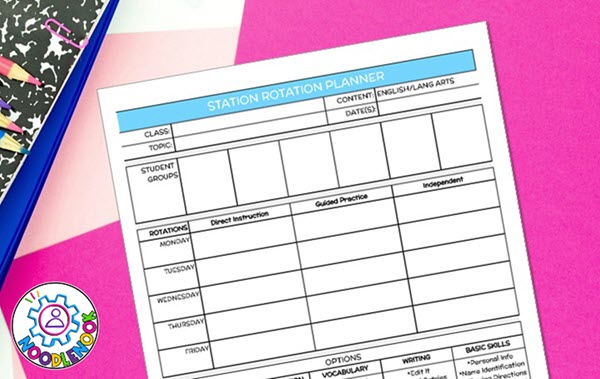
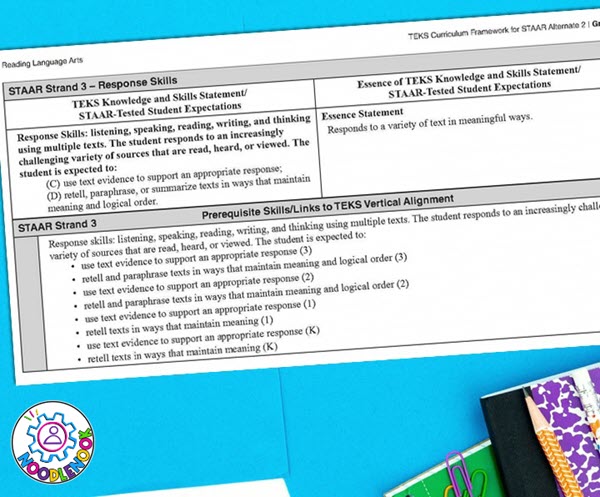
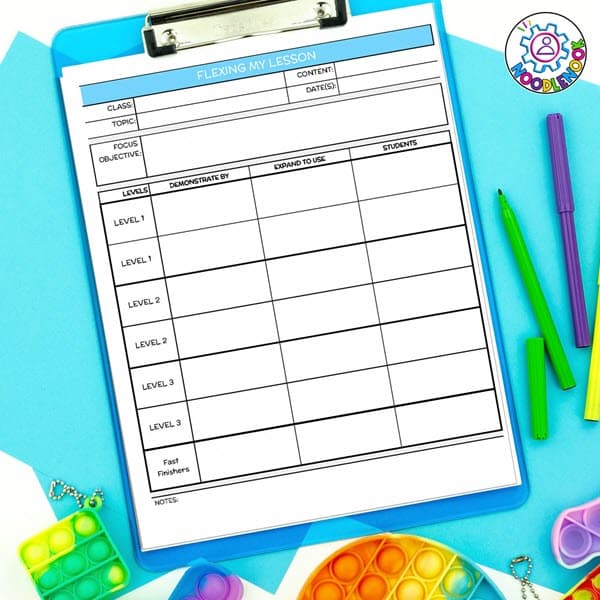
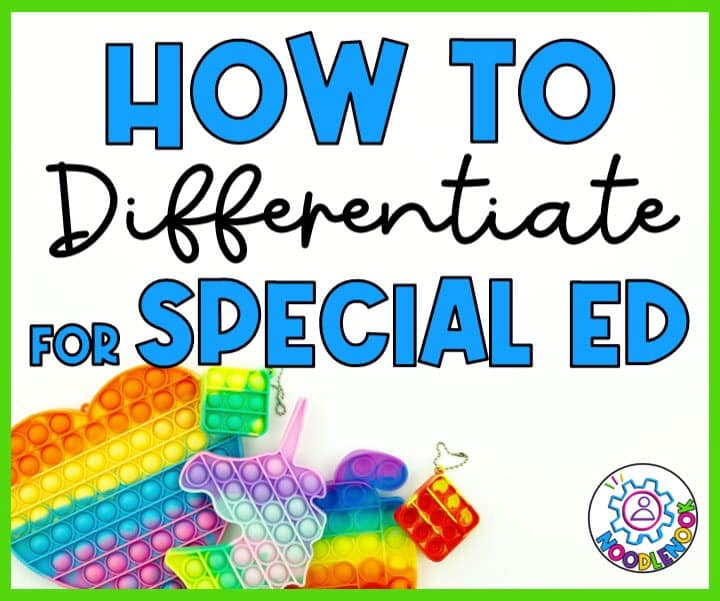
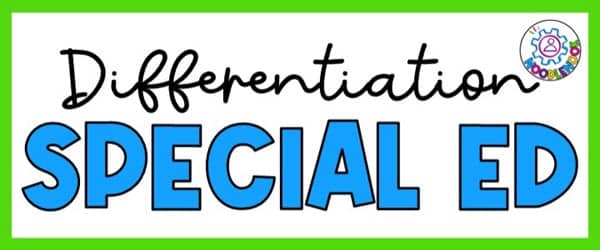


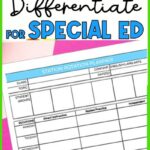
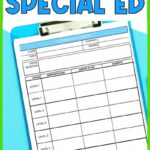
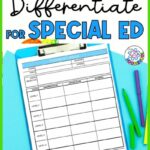
Your teaching skills are outstanding
Comments are closed.